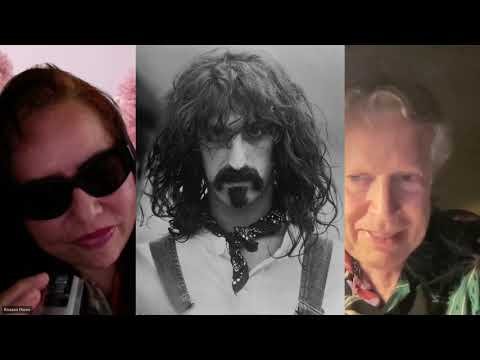I’m going to start with talking about the lightning before the thunder. That’s how I define Frank Zappa. So, I grew up in Europe and when I came to New York City in the 50s, I really liked Doo-wop music, which I heard for the first time on the radio in the early 50s in New York. There was a lot of it, which I had never heard in Paris.
I didn’t have any awareness of American music over there where I grew up, and the music environment was puny compared to what I experienced in New York. So, I got seduced by Doo-wop and then I followed all the other Pop music as Rock ‘n’ Roll came in. I liked it, and through my father, I also had a bit of acquaintance with Stravinsky and the modern composers that were just becoming known in the 50s.
In 1958, I was in the Mojave Desert on assignment to find out what the UFO flap was all about. There was a lot of talk about UFOs in the 50s around the Mojave Desert area in California. I was sent there by my Intelligence boss in Paris to find out what was actually occuring. And one night, I went to a Bo Diddley show in a club in that area somewhere. I saw two young people talking and they kind of stood out, just like normal, short-haired kids, but they were saying some strange words.
I heard one of them say, “Fast and bulbous”. I would never forget the phrase, “Fast and bulbous”. And I think I heard, “Tight and tapered”, after that. So, I went over and just sort of hovered near them to see what else they were talking about. And I eventually introduced myself. Well, it turned out to be Frank Zappa and Don Vliet. So, I talked to them and they were in their last year in high school.
I don’t think Don talked about being in school, but I didn’t really notice much, just that they were intelligent kids to talk to and I don’t remember much of what we said. Then I saw Zappa around that area one more time. But the thing that really struck me was I, meanwhile, met Art Laboe, the owner of Original Sound Records. And he was a big deal as a DJ and music producer in Los Angeles. And he told me about a guy in the Cucamonga area who had a studio that was incredible for its advanced equipment. And the guy’s name was Paul Buff.
Later I saw Frank on the streets of Lancaster in 1962 because I still went back there occasionally, looking for the UFO thing and seeing what would come out of that, whether it was real or not.
But at that time I told Zappa – I knew he was interested in music in some way – but he was working in advertising or something. And I told him he ought to go meet this guy, Paul Buff – where to go, and he said, “I’m going over right away, tonight”. And that was that.
Now, that’s in the spring of ’62, and later I went over to – because I had met Paul Buff through Art Laboe – his studio, and surprisingly, Frank was there in the studio.
I thought that Frank had taken my advice, gone over there, and became friends with Paul.
Now what is significant about that is, years later, I figured out he knew of Paul Buff before I had mentioned him to Frank. So, in retrospect, Frank had actually known who I was talking about. He had just said when I mentioned Paul’s name, “Oh, that’s interesting, I’ll go over there”. And that, to me, became symptomatic of the way he was.
He kept a lot to himself, and of course, he didn’t know who I was, really, yet. He wasn’t going to tell me what he knew, or whatever . That was the thing I remember about that – he “lied to me”. He didn’t indicate that he already knew the guy. So that’s my beginning with Zappa, in a way. Then I managed to get to the studio in ’64, ’65, before Frank lost the studio when he got raided by the cops in March ’65.
I subsequently was over there a couple of times when Don Vliet was there – and Motorhead. There were other people, I didn’t know who they were, but I got to hear them have fun making music in the studio. By that time, I knew that Zappa had some kind of charisma. I mean, the guy was totally antisocial and not really showing up in society that I could see, other than he had a job. But he didn’t have a job at the time in ’65, I don’t think. He just was obsessed with working in the studio.
So I got to experience the studio in Cucamonga. Then he got kicked out of the studio, spent 10 days in jail, and then went into L.A.. And the next thing I knew there were some riots in the street – on Sunset Strip in ’66. And I was in L.A. occasionally, and I saw some of these protests. I bumped into Frank around that time, and he told me he was going to New York City. So that would be the end of ’66.
So he ends up at the Garrick Theater in New York from April ’67 until September ’67, performing every night. I went to some of these performances – at least twice – and they were wild, fun, and unconventional… really interesting.
Frank went back to L.A. in the spring of ’68 and moved into the legendary Log Cabin. I visited him there and then Woodrow Wilson Drive starting about a year later for the next 20 years…
(Bob Dobbs)

